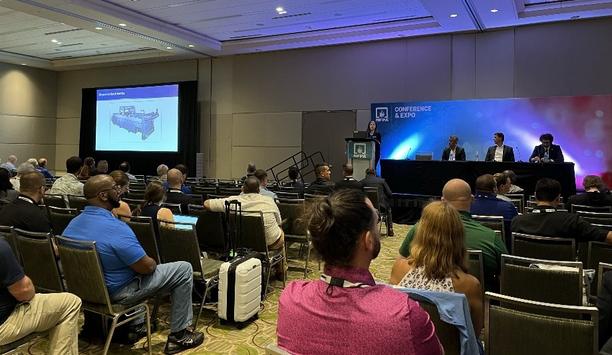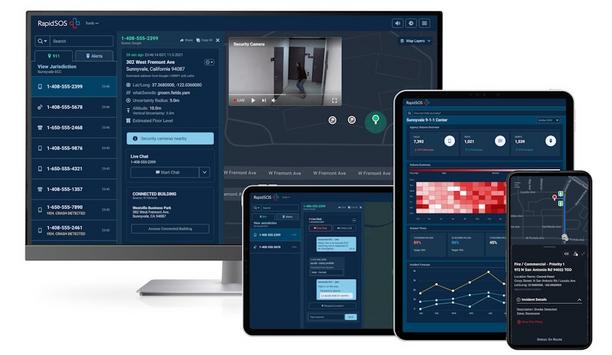Firefighters face unique stresses and hazards that cause a significantly higher risk of cardiovascular disease compared to the general population. In fact, cardiac events are the pioneering cause of on-duty deaths among firefighters and account for approximately 45% of duty-related firefighter fatalities in the United States, according to the U.S. Centers for Disease Control and Prevention (CDC).
The frequency of firefighter deaths from cardiac events is evident in a cursory glance at local news reports. For example, a Spokane Valley, Wash., firefighter suffered a cardiac arrest on July 21, 2023, just after finishing his shift and died two weeks later. A firefighter from Fairville, N.Y., died on January 21, 2024, while responding to a call at a structure fire. He was a 32-year veteran of the department, past chief, and former line officer. A Nyack, N.Y., firefighter responded to a gas leak at a residence and then suffered a heart attack and passed away on September 2, 2023.
However, not every firefighter death is widely reported. Therefore, the overall statistics show a better picture of the common occurrence of cardiac-related deaths in the fire service.
Preventing Cardiac Deaths
One is the extreme physical exertion required by fire suppression and rescue activities
In order to prevent cardiac “events,” which include sudden cardiac arrest and heart attacks, fire departments should implement rigorous health screening, promote heart-healthy lifestyles, and provide ongoing monitoring of cardiac health for firefighters. There are several elements of firefighting that contribute to cardiac risks. One is the extreme physical exertion required by fire suppression and rescue activities, which can strain the cardiovascular system.
Sudden stress during an emergency leads to a surge of adrenaline, and higher blood pressure and heart rate. This “fight or flight” response contributes to cardiac risk. Heat exposure during firefighting contributes to dehydration and cardiovascular stress. Inhalation of toxic smoke and chemicals during fires can also damage the heart and blood vessels over time. Firefighting activities also aggravate underlying health conditions, such as pre-existing heart conditions. Common lifestyle factors in the fire service are another factor. These include poor diet, inadequate sleep, and generalized stress.
Research Into Line-of-Duty Deaths
Myocardial infarction is the pioneering cause of line-of-duty deaths among firefighters
Myocardial infarction is the pioneering cause of line-of-duty deaths among firefighters; in fact, half of all line-of-duty deaths among firefighters are caused by myocardial infarctions, according to research presented at the American College of Cardiology 2021 annual meeting. Joseph Heaton, MD, a former resident at Brooklyn Hospital Center in Farmingdale, N.J., based his research on analysis of reported line-of-duty deaths. (Heaton is also a volunteer firefighter.)
Another research paper presented at the same meeting by Katie Vanchiere, MD, a former internal medicine resident at Temple University Hospital in Philadelphia, shows that the busiest firefighters — those who respond to more than 11 fires per year — may be at greatest risk of atherosclerotic heart disease. Recently, researchers at the National Institute of Standards and Technology (NIST) have used machine learning to accurately identify abnormal cardiac rhythms in firefighters. Reporting in Fire Safety Journal in 2023, researchers say they hope the work will lead to the development of a portable heart monitor that firefighters could wear to catch early warning signs of heart trouble and prompt them to seek medical attention before it’s too late.
How Fire Departments Can Help
There are many ways to minimize the risk of death from a cardiac event in fire service
Beyond technology, there are many ways to minimize the risk of death from a cardiac event in the fire service. Thorough medical evaluations before becoming a firefighter and at regular intervals can identify underlying heart conditions and cardiovascular risk factors. Exercise stress tests evaluate cardiac function under exertion, allowing for the detection of potential problems.
Physicians conducting medical evaluations should be knowledgeable about the physical demands of firefighting, the essential tasks of firefighting, and the consensus guidelines developed by the fire service.
Identifying risk factors
Identifying risk factors allows for early intervention and proactive management through lifestyle changes, medication, or further medical evaluation.
Fire departments should offer comprehensive wellness and fitness programs to promote cardiovascular health and overall fitness. Exercise programs should include aerobic fitness, strength training, and flexibility designed specifically for the demands of firefighting. Guidance on heart-healthy diets can reduce cardiovascular risk factors, as can managing the mental and emotional stresses of the job.
Cardiovascular risk factors
Implementing rotations during fire suppression can avoid prolonged physical exertion
Firefighters should be trained to understand cardiovascular risk factors specific to their profession and how to manage them. They should also be educated to recognize the signs of a heart attack or cardiac event. An open culture encourages firefighters to feel comfortable reporting any potential health concerns.
Rehabilitation areas should be designated during major incidents where firefighters can have their vital signs monitored, rehydrate, and cool down, reducing excessive strain. Implementing rotations during fire suppression can avoid prolonged physical exertion. Ensuring proper use of respiratory protection minimizes exposure to harmful smoke and chemicals.
Poll question
Which of the following factors has the biggest negative impact on a firefighter’s health?
- Poor diet.
- Lack of sleep.
- Not enough exercise.
- Generalized stress.




































